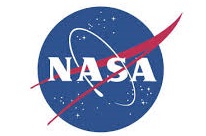Nasa astronauts who spend months on end in orbit have to learn to make do and mend in the best tradition of sustainability.
Missions to bring fresh supplies are expensive and time consuming. For any astronauts who take on a mission to Mars, planned for the 2030s, with the round trip likely to take two years, life would be even tougher.
That prospect has helped focus minds at America’s space agency, Nasa, on clever ways to provide for daily needs in challenging conditions. But the lessons being learned are also proving to have knock-on benefits down here on Earth.
As Cady Coleman, a Nasa astronaut and innovation lead, explains: “We basically have a limited environment in space, and it causes us to think about how we get stuff there, how we maintain it, and how we get most use out of it.”
Ms Coleman says space can be a fantastic “technology accelerator” – and that sustainable technologies devised by Nasa often find themselves repurposed for use on Earth.
Firms such as Nike, DIY giant Kingfisher and Ikea are already pursuing so-called closed loop business models – where waste is eliminated through repurposing and recycling – in the hope of being greener and cutting costs. And with pressure on water and fertile land growing, farmers are seeking less input-intensive methods.
So what can be learned from Nasa’s research?
1. Growing food
Take Nasa’s decades of research into growing vegetables in space, which culminated in astronauts harvesting and eating lettuces aboard the International Space Station (ISS) last year.
The crew grew the produce in “seed pillows” – a modified version of the common grow bag – and used specially designed, energy-efficient LED lights to power photosynthesis, an idea that originated with Nasa back in the late Nineties.
The lights, which use more growth-inducing red and blue-coloured LEDs than green ones, have also become instrumental in the rise of so-called vertical farming back on Earth, a highly sustainable form of agriculture.
Such farms grow produce on shelves indoors to optimise use of space and water, and could help feed a rapidly growing global population in the future, say proponents.
2. Clean water
In space, water is in short supply, so Nasa has developed an innovative way to filter waste water on the ISS using chemical and distillation processes. This lets it turn liquid from the air, sweat and even urine into drinkable H2O.
In fact, since 2008, more than 22,500 pounds of water have been recycled from urine alone on the ISS – something that would have cost more than £160 million to launch and deliver to the station from Earth.
“Most people are horrified when they see what we drink!” says Ms Coleman. “But the filtered water up there just tastes beautiful, it really is delicious.”
Nasa has since licensed the technology to companies on Earth, which have created portable filters for use in places where fresh drinking water is scarce.
Nasa is also funding research into whether human faeces can be recycled into food on long space missions – although it seems unlikely that such an extreme solution would catch on back on Earth.
3. Recycle your tools
Ms Coleman points out that “down here, we can pretty much all go to the hardware store to buy tools – but our situation in space drives us to be more resourceful and to renew, reuse or recycle tools.”
As such, Nasa is experimenting by 3D printing tools out of hard plastic on board the ISS.
“We could need a tool, get a design for a tool sent up, print a tool and then reuse that material to print other tools,” says Ms Coleman.
Researchers from NASA’s Ames Research Centre in California are also looking into the problem of litter, which can clutter up a shuttle or space station.
4. Green buildings
Nasa’s Ames centre has constructed a green building on its campus in Moffett Field, California, where energy-saving technologies of the future are being tested.
Sustainability Base leaves “virtually no footprint” and uses several innovations from space, including solid oxide fuel cells of the type found on Nasa Mars rovers to generate electricity, and a system that reuses wastewater to flush toilets.
These buildings represent the culmination of an overall philosophy that consuming resources should be done, wherever possible, according to closed loop principles, without exhausting supplies or creating unnecessary waste.

